I am an admitted gear-hound. I like stuff. While that in and of itself isn’t a problem, I suffer from a more sinister condition; I like nice stuff.
I blame my dad. I can remember him telling me that if I had narrowed my purchase down to a particular model, I should always buy the next better model. He advised that I would only feel the pain of the increased cost for a short while, but I’d enjoy the better item for years to come. Additionally, the better model often meant better quality as well, which would help to ensure an even longer lifespan for my purchase. Sage wisdom.
Today it seems that purchasing the “better” item rarely buys increased quality, but instead offers increased functionality. In the world of electronics, that can make sense. Electronics though, has become the epitome of mass production. Not only are hand-made electronics now the realm of boutique builders, those boutique builders are becoming more scarce every year.
Though I love technology, I am also a lover of an analog world. Acoustic guitars, for example, can still be purchased from luthiers who spend months handcrafting their instruments. These old world skills are in danger of being lost forever since most of the major manufacturer of guitars have been using CNC machines for years. They may still make guitars by hand, but these custom instruments often cost thousands more than their assembly line brethren.
In a similar vein, I recently purchased a new chess set to celebrate the fact that I am routinely beaten at the game by pre-teen girls. Actually I decided to retire my original set that I made for my father in the 1970s. It had served me well, and needed to be displayed instead of handled. It was time to move on.
I shopped for a nice set and settled on a very nice set, a beautiful hardwood custom board, and a stunning box to hold the pieces. The set was from The House of Staunton, a premier chess set company who’s name would be recognized by anyone serious about chess. I eagerly placed my order and awaited its arrival.
Chess pieces are notoriously difficult to make. They are mostly turned on a lathe, but items like the ball on top of the pawn must be perfectly spherical or they look terrible. From what I understand, this is a difficult task, and it is by no means the most complicated. Knights in good chess sets are hand carved, and can often account for half of the price of the entire set since they are so labor intensive. The black pieces in good chess sets often made from ebony which is very dense, difficult to work with, in relatively short supply, and therefor expensive.
The chess pieces were very nice. There was a couple of small problems with the rooks, and the company took care of them by swapping them out for new ones with no questions asked. Customer service is alive and well. My only beef was that for the price I paid, I should not have had these problems in the first place. Still, the problems with the pieces were minor, and House of Staunton stood behind them. The chessboard was another matter.
I originally ordered a chessboard made from Cocobolo and Holly. It was gorgeous. When they inspected it for shipment however, they discovered that it was also severely cracked on every dark square. The Cocobolo had dried out in the warehouse and was in unsalable condition. I really liked that board, but accepted a different board made from Birds Eye Maple and Purpleheart. I’d never heard of Purpleheart wood, but it sounded intriguing. I agreed to the new board and eagerly opened it when it arrived.
From a distance the board was stunning. Upon closer inspection I started to notice some problems. There were scuff marks along the border of the board. I thought they might have been wax, but they did not buff out, and when photographed with a macro lens, they were revealed to be scratches or some kind of patch of dried and bubbled finish. Far worse though, was the detail of the joints between the squares in the board.
Chessboards can be difficult to make. Different species of hardwoods are glued together in a manner contrary to the way wood likes to be glued. This can result in joints being less than perfect. The different woods can shrink and expand at different rates which can also cause problems. I get all that. When I pay top dollar for a premium hardwood board, I expect that it has been made by master craftsmen who care about every detail. What I got was a board with pretty squares that didn’t line up properly. Not only were the joints seemingly separating, the squares were slightly misaligned.
I’ll be the first to admit that I’m a perfectionist, and I have pretty high standards. When I pay good money for what is supposed to be a luxury item, I expect the product to live up to those standards. Otherwise, why would I spend that much money? For reference, this board had a listed price of $1,000. To be fair, I used a pile of coupons and got everything at a nice discount, but this is a $1,000 chessboard we’re talking about.
House of Staunton did everything in their power to make this sale right. I had seven days to send it all back and they even offered to waive the restocking fee. My problem is not with the company. My problem is with what I see as a continued sale of goods marketed as upscale, which are not. This is not a House of Staunton problem – this is a problem with damn near every high-end consumer goods company I deal with. I have no doubts that many of these items are made in India or China for pennies then shipped to we the greedy consumers here in the US. I have no idea where my chessboard, pieces and box were made. I have my suspicions, but I have no proof. If they had been perfect, I likely wouldn’t have cared, but the problems certainly made me wonder.
Again, House of Staunton was fantastic through all of this. In the end they offered to let me have the board at cost, and I accepted. I managed to buff out the problem corners by using 0000 steel wool resulting in corners look much better. While the detail of the squares being slightly off bothers me when I think about it, the board is so beautiful that no one else notices. During a chess match you stare at the pieces, not at the board, and from even a couple of feet away, a normal person would never even notice the issue. I was happy with my board and satisfied with the resolution.
When I got the pieces and the board together, I felt that the pieces looked a little small. I had originally ordered a 4.0″ inch king, but the original board that I wanted had smaller squares. I felt that the larger pieces would look perfect on this bigger board. I suggested that instead of House of Staunton sending me a partial refund for the board, they instead apply that amount to a larger 4.4″ king set. House of Staunton, again showing exemplary customer service, agreed to my offer. They sent me the new larger set and I sent the first set back.
When the new set arrived, I eagerly opened them up to inspect them. When I looked at the very first piece, I noticed a problem.
Ebony is a wonderfully dense wood that, in my experience, is a deep and complete black. The wood is used for its absolute blackness, hardness and texture. Guitar fretboards are often made of Ebony, as are the fingerboards of violins and other stringed instruments. The image to the right shows two guitar fretboards. The top one is ebony. Notice the absolute blackness of the wood compared with the much browner, granier wood of the bottom guitar. The bottom guitar’s fretboard is made from rosewood, a less expensive wood that is often used in guitars that cost less, though it is not necessarily cheap by any means. The guitar on the bottom is a $1,000 guitar, while the one on top is a $2,000 guitar.
The guitar necks show an example of what good ebony should look like. When examining a set of ebony chess pieces, they should appear to be as black as the top guitar fretboard in my picture. Unfortunately, when I inspected my new chess set, that’s not what I saw.
Under dim room lighting, the pieces looked fine. Under better light, I could easily see that either these pieces were not ebony, or they were a very poor (and thus inexpensive) ebony that had been dyed in order to appear black. Is this what I should expect for a hand-carved $800 set from the premier maker of fine chess sets?
I sent an email to House of Staunton, explaining that my set might have been mislabeled, and showed them the pictures. The agreed to send me a third set. This time they sent me a shipping label so I would not have to pay the return shipping on set number two. Even through all of this, House of Staunton continued to be courteous and never once gave me any problems either via email or on the phone. I was having what I considered to be some pretty serious problems, and they handled it very well. Still, even with the exemplary customer service, I was beginning to get frustrated. I had started this quest over a month earlier with the idea that this would be my father’s day set. Father’s day was fast approaching, and I still didn’t have a complete set that I felt was up to the standards outlined by House of Staunton’s own website.
When I got the third set, I took them out to examine them. Immediately I notice that this set was different – the pieces were bigger. Curious, I took out my calipers and measured. Since I still had the second set, I could make detailed measurements. The king from set #2 was 4.31 inches high, while the king from set #3 was 4.42 inches high. Both were measured with the finials attached. The pieces had noticeably different contours as well. What the heck was going on here? I set the pieces up side by side and took detailed pictures. Look at the queen from set #2 between the two queens from set #3. Look at the rooks from each set. Remember, these are both supposed to be the same sets – Collector Series Luxury chess set with a 4.4″ king.
I sent an email to House of Staunton and asked why there was a difference in size between the two sets. As it was explained to me, the smaller set (#2) was from the new carver they were using, while the larger set (#3) was from their old carver. The wood was considerably better on the larger set, and the pieces all looked great, with the exception of one of the black queen’s who had a broken crown (not an uncommon occurrence during shipping). House of Staunton sent me a replacement queen free of charge, as is their policy. I sent back set #2 and finally had a complete set that I was happy with. My initial order was placed on April 23rd. I got the final queen on June 19th. Total time spent: just shy of two months.
I’m very happy with my chess set, box and board. Even with all of the problems I had, I’m very happy with the customer service I received from House of Staunton. I am bothered that some people might be receiving chess pieces that aren’t of the quality they think they are, or aren’t of the size they’re supposed to be. I mean, how many people go measuring their new chess set when it arrives? I would never have known that my second set was 4.3 inches instead of 4.4 inches. One tenth of an inch doesn’t sound like much, but side by side, the difference was obvious. I am also concerned that should I break a piece in the future, getting an exact replacement might be difficult given the variation I’d seen in just two sets. House of Staunton informed me that I could always send the old piece in and they would make sure to send me an exact match.
Would I buy from House of Staunton again? Probably, though I don’t know that I’ll ever need another chess set of this caliber. I’m a very loyal shopper, and most of that loyalty comes from how I am treated as a customer. Time and again, House of Staunton dealt with my complaints as well as I could have possibly hoped. Certainly I would have been happier if my order had been perfect the first time, but it wasn’t. How a company deals with problems is far more telling than how they deal with regular sales.
I would advise that anyone who orders one of these high end chess sets examine each piece carefully with a critical eye under good light. Make sure you’re getting what you think you’re getting, and don’t be afraid to speak up if you’re not completely satisfied. I spent a fair amount of money on this set, and with the number of problems I had, I was never once upset or angry. Why? Because I was treated with courtesy and respect by House of Staunton. How many other companies would put up with me complaining that the grain in the wood wasn’t right, or that the pieces were one tenth of an inch off in size. How many companies would put up with that for two months while they worked to make it right? In my experience, not many.
Hopefully House of Staunton can get a handle on their carvers, and put out a more consistently excellent product, because when I finally got the product I expected, it was really quite impressive. I expect to play with this set for many years to come, and for my kids to fight over it when I’m gone. That’s really what I was after – an heirloom quality chess set. Forty years from now my kids won’t remember my struggles with this set and the exemplary customer service I received. They will remember the hundreds of games we played using the set. I now have a set worthy of the memories we will make.
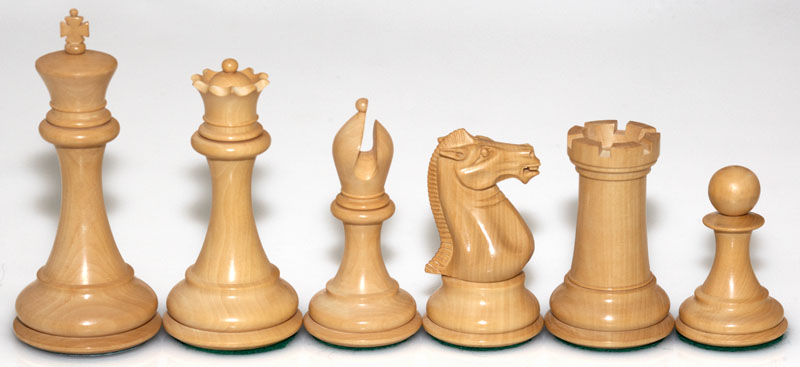
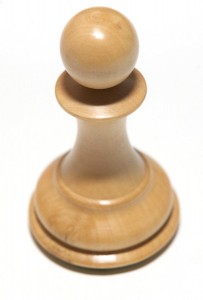
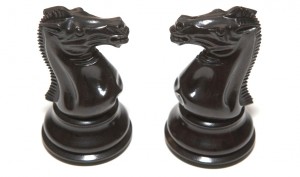
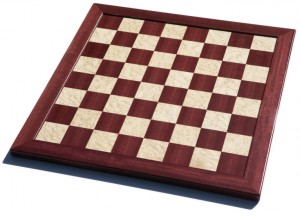
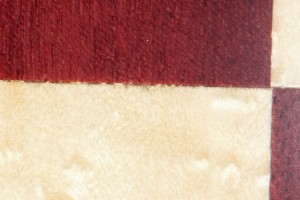
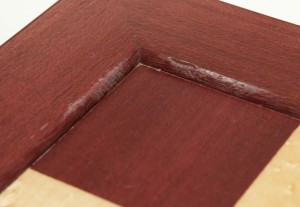
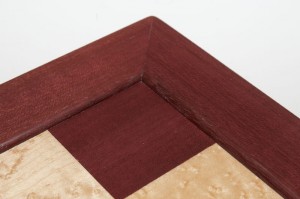
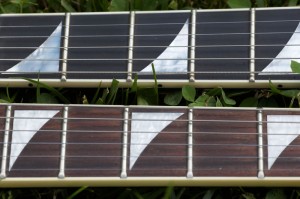
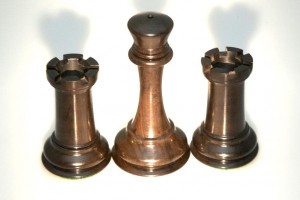
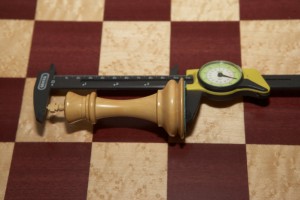
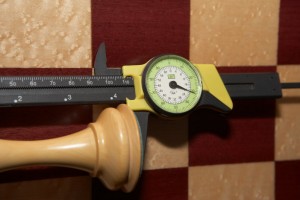
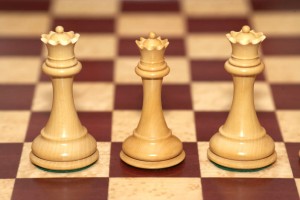
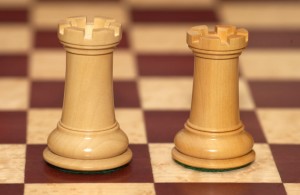
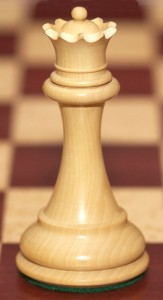

Both the cocobolo and the purpleheart boards you bought are Signature Traditional boards. This line was previously made overseas, and quality on these boards was spotty, at best. Please do not judge all of the higher-end Staunton chess boards on the quality of the Signature Traditional line. The Signature Contemporary, Signature Contemporary II, and Custom Contemporary lines are all hand made in Evans City, Pennsylvania, by a company called Custom Wood Creations. I will personally guarantee that you will NOT have the same quality control problems with any of the chess boards in these 3 lines.
If you plan to visit the House of Staunton showroom, please keep in mind that HOS no longer stocks any of the chess boards in the three product lines mentioned above. These boards ship directly from the builder’s inventory in Evans City.
Great points. I’m glad HOS has found a new US-based source for their boards. Unfortunately for me, the Signature Traditional boards were the ones that really spoke to me. Sounds like people who buy the newer boards will not have the issues I had.
Thanks for the excellent and informative comment.
GAD
This is a good example of why one should spend the extra money to get a fitted case for their HOS top of the line sets. If you buy the fitted case, the pieces are unwrapped and placed in individual padded slots in the case. Most obvious faults will be noticed by the packer – chipped pieces and odd colors in particular. If you just get the regular box – which is actually a very nice box, the pieces are going to be shipped in their original padding as they arrived from India. Why? because it takes about a half-hour to unwrap, inspect, rewrap, and repack a nice set. It just isn’t worth it, and it really can’t be made worth it. If you increase the price of the sets to cover inspection then you sell less sets. HOS attempts to maintain high quality control, sometimes rejecting entire lots of pieces – but controlling quality in India from the US is just hard to do. Nothing beats actually going to the House of Staunton and hand picking your own set, otherwise it may take a while to get the set just right. However once you do get it right it will be something very special.
A note on the boards, I do not know anything about the newer Custom Wood Creations boards, but in my experience what makes for a truly outstanding high-end board is beautiful wood, fine craftsmanship, and solid squares at least 1/4 inch thick on a very solid backing. The board complained about here has relatively thin veneer squares. Beautiful wood is often somewhat translucent and needs to be thick to be appreciated. If I remember, a great board is almost twice as heavy as a not so nice but still very expensive board. Be aware that even a beautiful board will not be perfect – wood is not plastic – it varies, and the variety makes it unique, beautiful, but not perfect.
FWIW, I did order the top of the line case along with this set. It still came in the box as shipped from the supplier. The case I ordered was the Red Burl Fitted Coffer found here: https://houseofstaunton.com/Store/product_name=Red+Burl+Fitted+Coffer/ I ordered it with the set in order to take advantage of additional discounts.
The board in my blog was advertised as having a 3/4″ wood playing surface – not a veneer. The link for the board is here: https://www.houseofstaunton.com/KingCart/signaturetraditional.html Note that they no longer sell this board, so the page may not be current.
I agree though, that nothing beats choosing a set on-site. Unfortunately, that was not an option for me.
I will repeat that HOS treated me very well through the entire process. I will continue to shop with them in the future. Thanks for the comments!
GAD
I purchased the African Palisander / Curly Maple Signature Contemporary II Chessboard direct from Joel Will and can attest to the quality product and customer service he provides.
I read with great interest the article you wrote during January, 2010 about your experience with The House of Staunton and the chess set and board you purchased from them. My own observations about the so called quality or luxury chess sets sold today is very similar to your own. In the first place they all appear to be made in India with no exception I have been able to find. At least one person who sells (if not imports) them has confirmed that and has also stated even Jaques’ chess sets are manufactured there! Long gone are the days when devoted, dutiful and accomplished British carvers were hard at work daily putting in long hours to produce such things. Moreover, the craftsmen in India producing such sets earn no more than a pittance for their labors while those importing and selling them in the US and elsewhere are able to push them out the door at astoundingly high prices! What ever happened to the days when savings were passed along to the consumer and greed was not the order of the day?
I was taught to play chess by my father and uncle just about 64 years ago when I was 6 and learned to play using an early 1900s Jaques set. Eventually my father gave me the set I learned the game with, which I used till it fell apart as a consequence of drying and cracking of the wood. I was in contact with the the Jaques company which wanted the set to use for replacement pieces in other sets which were reparable. Accordingly, I traded it in toward a then current Jaques set which is now about 35 years old and in remarkably good shape! Since Jaques is a family owned business I dealt with a member of the Jaques family who made me an offer I could not refuse.
I should mention that not only have I observed the problems discovered by Mr Donahue, I have also noted that the finial on many bishops is partially sliced off by the miter (which is the slice in the bishop’s hat or head), creating a flat on one side of the sphere! I do not know if this troubled Mr. Donahue, however I find it to be most annoying and evidence of a lack of attention to detail or cost-cutting shortcut in the manufacturing process. The upshot of all this is when receiving a new chess set examine it carefully, paying attention to detail. If you are not happy with what you received for your money, do as I and the author did: encourage better craftsmanship by returning it to its vendor.
Hi.
Very interesting article. Thanks. Can I ask you a couple of things, please? What did the original box from the supplier look like? Was it a felt-covered thing with lift-up lid, silk lining and two trays inside, one on top of another, with slots for the pieces set in a sort of crinkly fabric?
Second, did the pieces have leather on the bottom instead of felt?
I ask these questions because I just acquired a set without markings that I believe is a HoS set but it doesn’t have any markings. If your original box looks like mine, it would be one step closer to identifying my set.
Finally, Marc L. Ames is misguided on the point about the sphere on the bishop: the very first Jaques sets from 1849 had the little sphere shaved on one side, so this is not a defect but rather a conscious design. A look at the evolution of the bishop in early Jaques sets reveals that this slicing of the litle sphere was typical and consistent. Jaques did make sets with a complete sphere as part of other changes that the designers introduced. One is example is the 1852 set, another the 1870-1880 and a third 1885-1890. But the sliced little sphere was more common in their various designs than not.
Sorry for the delay. In the set I have, all pieces are felt on the bottom except for the king which is leather. Both sets described in the article came in cheap low-grade cardboard boxes from (I believe) India. The casket I store them in was a separately purchased item.